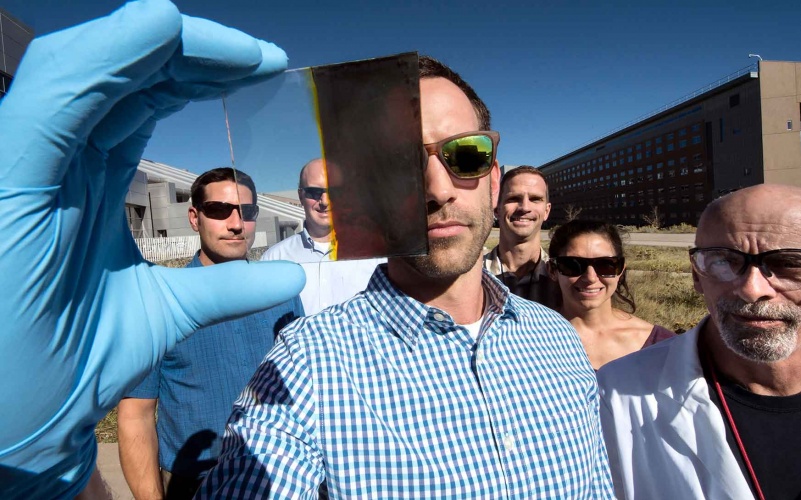Solar glass darkens as it converts light to electricity
Researchers in the US have created a new type of solar glass that changes from clear to tinted as it heats up and produces electricity.

Lance Wheeler (front) and the NREL team (Credit: Dennis Schroeder/NREL)
The material, which uses perovskites and single-walled carbon nanotubes, was developed at the US Department of Energy’s National Renewable Energy Laboratory (NREL). When solar energy heats the glass, methylamine molecules are driven out, darkening it. As the device cools, the molecules are re-absorbed into the glass, and it changes from tinted back to clear. A paper in Nature Communications describing the work claims a solar power conversion efficiency of 11.3 per cent.
“There is a fundamental trade-off between a good window and a good solar cell,” said Lance Wheeler, a scientist at NREL and the paper’s lead author. “This technology bypasses that. We have a good solar cell when there’s lots of sunshine and we have a good window when there’s not.”
According to the researchers, the device allows an average of 68 per cent of light in the visible portion of the solar spectrum to pass through when it’s in a transparent - or bleached - state. When the window changes colour - a process that takes about three minutes of illumination - only three per cent is allowed through. Wheeler believes the technology could be used in buildings and vehicles to power things like batteries, smartphones and onboard electronics.
Register now to continue reading
Thanks for visiting The Engineer. You’ve now reached your monthly limit of news stories. Register for free to unlock unlimited access to all of our news coverage, as well as premium content including opinion, in-depth features and special reports.
Benefits of registering
-
In-depth insights and coverage of key emerging trends
-
Unrestricted access to special reports throughout the year
-
Daily technology news delivered straight to your inbox










National Gas receives funding to develop Gravitricity underground hydrogen storage system
There can't possibly ever be a '<i>business</i>' case for the <i><b>bulk</b></i> storage of hydrogen, since Green hydrogen electrolysis...